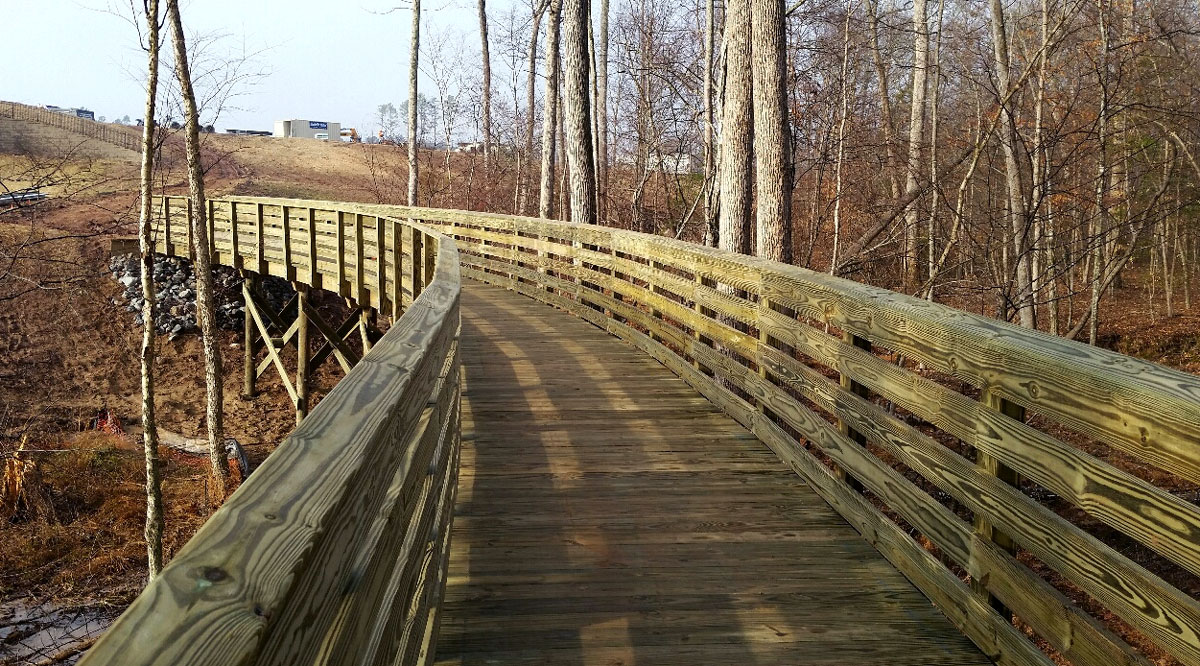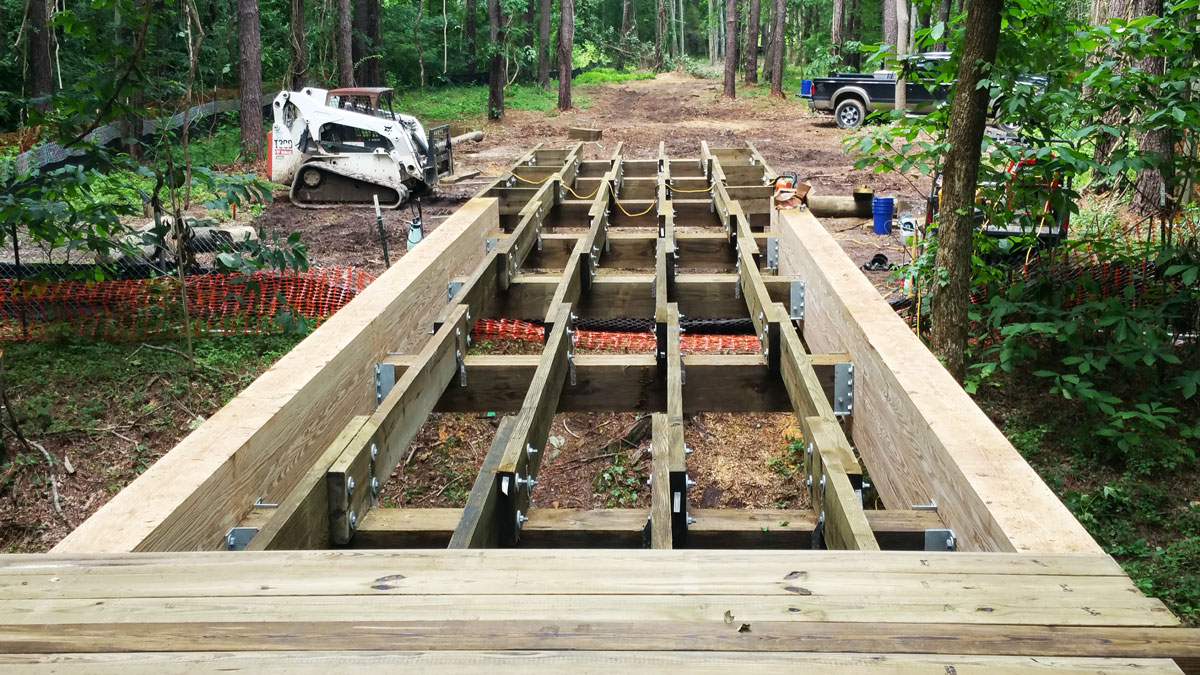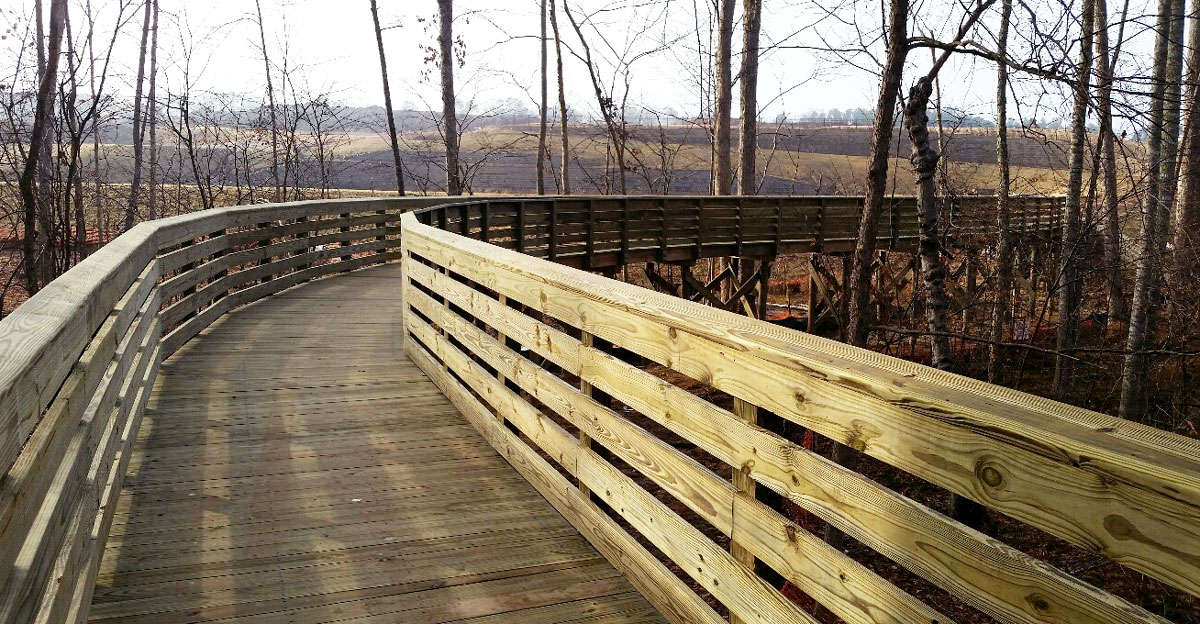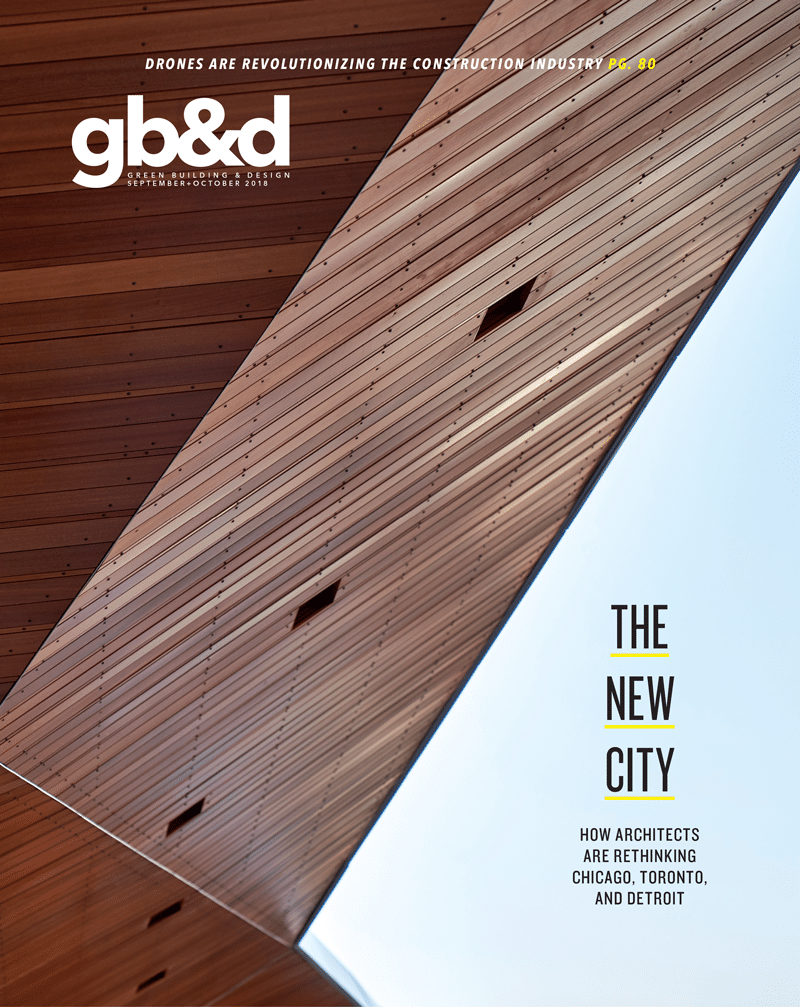
A top-down approach was used at Amberly Glen to protect wetlands. [Photo: Ralph Carson, Sullivan Eastern]
Backwoods Bridges takes an environmentally friendly approach to creating people-centric bridges and walkways.
Walking across the finished timber bridge, you probably wouldn’t guess it was built from the top down. And yet that’s exactly how all three of the bridges at the Amberly Glen development in Cary, North Carolina, were constructed. It’s an approach that was chosen because a portion of the trail system in this community of single-family homes and townhomes is built upon wetlands.
With traditional building methods, the crew would have had to come in with a large crane and potentially a barge to pass through water. That’s a lot of heavy equipment to traverse a sensitive environmental site like a wetland, explains Andrew Kuehl, chief estimator at Backwoods Bridges, which designed and built the bridges and boardwalks at Amberly Glen. Working top-down, however, allows the crew to build the bridge with the tractor and other machinery right on top of the structure itself. “You basically build a 10-foot section or so at a time, and then you move your machinery onto that 10 feet you just built, and you keep building progressively until that structure is built,” Kuehl says.
FROM OUR SEPT+OCT 2018 ISSUE
The preferred publication of leading green professionals.

Backwoods Bridges has been making custom timber bridges since 2008. [Photos: Ralph Carson, Sullivan Eastern]
Why They Did It
It’s a process with multiple benefits. “If you’re working in a wetland area or a place that’s hard to get to with traditional equipment because of site conditions, you basically remove all those site conditions out of the equation, and now you can build from a stable structure,” Kuehl says. “It eases access on the contractor, where you don’t have to tear up the world just to build something. And it’s much better for the environment because your tractor isn’t tearing it up.”
The approach was a perfect fit for the bridges at the Amberly Glen project, which were built between 2017 and 2018. Two of the three bridges are combined with boardwalks, given the wetland topography. The top-down style is crucial to protecting that beautiful environment, says the project manager for the development, Ralph Carson, of Sullivan Eastern. Not only would the wetlands be damaged in a traditional building process, but it would take a significant amount of time to replant the foliage under the affected area. And even after replanting, you wouldn’t likely result in the same mix of grasses and flowers. “It’s an aesthetic issue, it’s an environmental issue, [top-down construction] just solved a lot of problems,” Carson says.

Attention to detail and custom design make Backwood Bridges stand out. [Photos: Ralph Carson, Sullivan Eastern]
Standout Work
Backwoods Bridges, founded in 2008, has made a name for itself building custom timber bridges and trails across the country. The timber itself, of course, is essential—the firm works with a Georgia-based supplier of southern yellow pine. But what sets the company apart goes beyond raw materials.
It’s the attention to detail, the design touches, and the customization, says Andy Mullis, senior project manager at Backwoods Bridges, which is based in Freeport, Florida. Just about any builder can pick up some lumber and put together a bridge, he says. But having the bridge designed and built by the same firm allows for an additional level of customization. It means designers can ensure the structure integrates perfectly into the environment. That could come down to something as simple as steering the bridge around a tree the developer doesn’t want to cut down, he explains.

The Amberly Glen project in North Carolina included three bridges in a wetland area. [Photos: Ralph Carson, Sullivan Eastern]
Mullis says that expertise shapes all kinds of decisions. For example, there are a couple ways to connect two members on a bridge. A traditional engineer without timber bridge experience would likely opt for a bracket. But a Backwoods designer would opt for a bearing connection, in which both pieces are fit on top of each other. This allows for a faster connection process and a stronger connection, he says, adding that these are the things gained by “hard-won experience.”
Plus, there’s an aesthetic benefit to the style. “I like the way timber and wood look on a bridge,” Kuehl says. “I mean, concrete and steel are kind of hard, and they just don’t have a good look, whereas timber has warmth and characteristics that make it look and really stand out and become a centerpiece.”
As Seen In
- Walt Disney World, Orlando, Florida
- Henderson Beach Resort, Destin, Florida
- Sandestin Golf & Beach Resort, Miramar Beach, Florida
- Neuse River Greenway Trail, Raleigh, North Carolina
- Courtyard Marriott, Okaloosa Island, Florida
- Tuckahoe State Park, Queen Anne, Maryland


